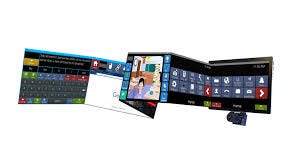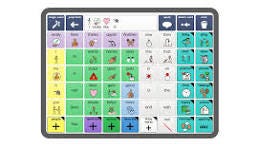Voice After Sixty Years: Jim and Nan’s Journey to Communication
For Jim and Nan, words were always just out of reach—heard but never spoken, understood but never shared. Now in their sixties, this sibling duo are both wheelchair users and non-verbal, having spent a lifetime locked inside their own minds, unable to crack a joke, voice a need, or say “I love you.” With little to no controlled movement, traditional access methods had never worked for either of them. Without an accurate means of input, Augmentative and Alternative Communication (AAC) was written off, deeming communication as impossible. And without a voice, they had been forced to accept a world that did not hear them.
That all changed when their sister, Sue, refused to give up.
Sue refused to accept that silence was their fate. After years of searching, she made one more call—one that would change everything.
Her determination led her to me, an assistive technology specialist with over 30 years of experience. I’ve worked with countless communication systems, searching for the right combination of device, application, and access method that could unlock someone’s voice. But would this time be different?
This past week, I had the privilege of starting to work with them. His care team, sister, and I decided on a game plan that focused on Jim first. After completing an assessment and introducing several devices and alternative input options, I decided to focus on Jim’s use of the EyeGaze Edge—an advanced eye-tracking communication system. I held my breath as I set it up. Would it work? Could Jim, after six decades of silence, finally have a voice? Could this be different than everything else that he has ever tried?
Why the EyeGaze Edge Worked for Jim
Eye tracking systems can be incredibly powerful, but their success often depends on accurate positioning of the device with respect to the positioning of the user. A slight change in posture can make the difference between seamless communication and complete frustration. That’s why the EyeGaze Edge was the perfect solution for Jim. Unlike devices with built-in eye-tracking cameras that require precise user positioning, the EyeGaze Edge features an external camera. This allowed me to adjust its position and focus in real time without having to move Jim or the device itself.
With the onscreen eye indicator, I could instantly determine whether selection errors were due to Jim’s eye alignment with the camera or his ability to complete a task. I was able to fine-tune the camera to meet his exact positioning which led to his almost immediate success. This real-time adjustability eliminated the trial-and-error frustration that often comes with eye gaze systems. Instead of struggling to make the device work for him, the device adapted to him.
Within minutes, his eyes locked onto the screen, and the device responded. He was communicating. And Nan, observing in awe, anxiously awaited her turn.
Since Jim is a non-reader, I introduced Grid 3, an advanced AAC (augmentative and alternative communication) software designed for individuals who rely on symbol-based language to communicate. Grid 3 allows users to select symbols representing words and phrases, which the system then converts into spoken language. With its intuitive, customizable interface, we tailored the system to meet Jim’s needs, ensuring he could easily navigate and express himself.
As he began selecting symbols and hearing his thoughts spoken aloud, a huge smile spread across his face—a reflection of his excitement and newfound independence. By the time I left, he was making requests, sharing his thoughts, and even navigating to the sports section, selecting the St. Louis Cardinals logo, and beaming as the system spoke the words aloud. It was the first time that he had ever independently talked about his love for baseball.
From Silence to Connection
The impact was overwhelming. Tears filled the eyes of those in the room as they watched Jim take his first steps—through his eyes—toward meaningful interaction. His world, once silent and isolated, was beginning to open.
Technology Alone Is not Enough
But here is the truth: no AAC device, no matter how powerful, will ever succeed without proper setup, training, and ongoing support. Too often, individuals are given a device, leaving the user and the support team to figure it out on their own, leading to abandonment. Communication isn’t just about technology—it’s about the right tools, the right training, and the unwavering belief that everyone deserves a voice.
A sixty-year wait is far too long. But this past week proved that it is never too late to try again.
Do not Wait Another Sixty Years
Jim’s story proves that it’s never too late to find your voice. But no one should have to wait sixty years. If you or a loved one struggles with access to communication, don’t wait another day. The right tools and support are out there—let’s find them together.
Contact Laura Dieckhaus at Way Maker Assistive Technology Solutions (waymaker.ats@gmail.com).
The right support can change a life.





